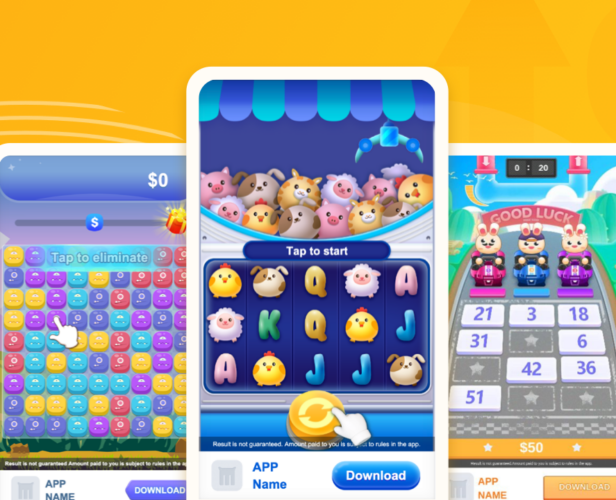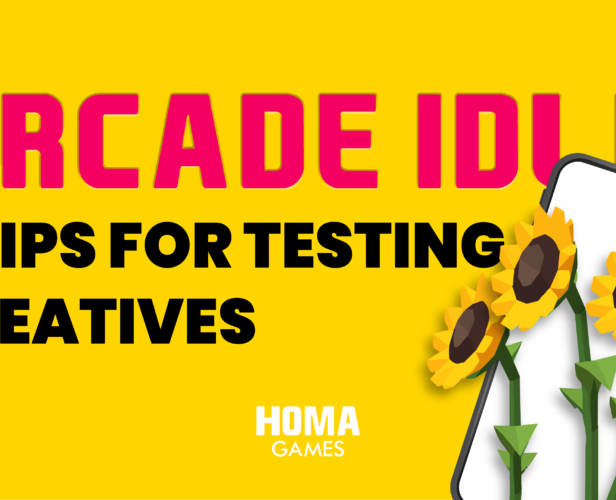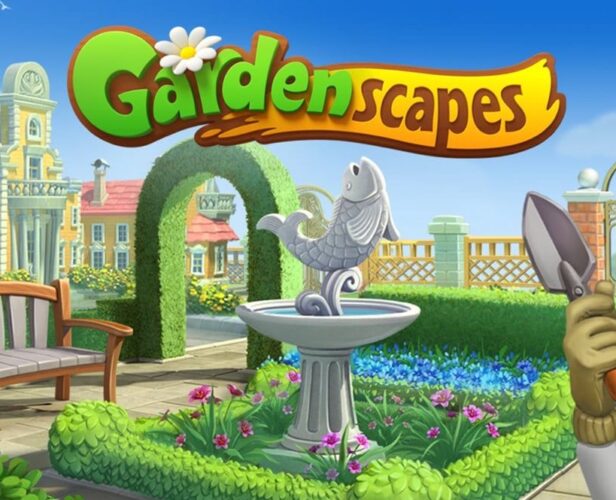Category
Ads & Monetization
#Ads & Monetization
Boost your user acquisition with free playables!
Editors note: This article was originally written and published by Mindworks, a leading self-service creatives platform from Mintegral. You can find their original version here. Mindworks is giving GameAnalytics users exclusive trial access to create countless playables and advertise them for free with Mintegral. Hurry, this amazing offer is for a limited time only. Activate your free Playturbo trial What’s the deal with playables? Playable ads have quickly become one of the most popular ad formats among apps and brands due to their premium user experience, accessibility, and superior conversion performance. And while playable ads are effective, they are typically expensive and time-consuming to produce, posing a significant challenge to scalability. It’s for this reason we’ve launched the Playable Ad Editor on the Playturbo platform. The Playable Ad Editor now provides advertisers with a zero-coding, drag-and-drop online editor to easily...
#Ads & Monetization
Navigating Web3: What does it mean for Game Developers?
If you read tech news, you’ve probably stumbled on the term Web3. And you might be wondering what it means and how it could affect gaming. So let’s explore Web3 and the surrounding opinions. What is Web3? It’s all about ownership. The web has been going through gradual changes, ever since it launched. Web1 was where people uploaded websites with static pages and information. You simply read Web1. The next step was Web2, where users create their own content. Web3 is a prediction that users will begin to own digital content and have control over how they use it. But it’s also about decentralizing that ownership: making sure it’s not tied to any particular platform. (You don’t just own a movie on one platform, you own the right to watch it anywhere, for example.) “I was lucky enough to be...
#Ads & Monetization
Top 10 Hyper-casual Game Ad Networks in 2022 (Q2)
Editor’s note: This article was written and published by Tenjin. You can find their original version here. Let’s explore how the hyper-casual market has changed compared to 2021 Q3 and go through the top 10 ad networks and countries for 2022. This time, we partnered with our friends from GameAnalytics to bring you day one and day seven retention benchmarks in this report edition. The complete information is available at the bottom of the post. Hyper-casual ad spend by platform. In 2021 Q3, hyper-casual ad spend by the platform was a bit higher on Android (55%) than iOS (45%), marking a decrease of nearly eight percentage points in ad spend on iOS compared to 2020. In 2022 Q1, advertising spends on iOS and Android now shows a 50% / 50% split, suggesting that advertisers are becoming more and more comfortable with mobile...
#Ads & Monetization
How will monetization models change in 2022?
Editor’s note: This article was written by the clever minds at HyperBid. Hello there. I’m Ahmet, the business director here at HyperBid. Aside from the obvious ups and downs last year, we also had some big changes in how the monetization industry works. From new models improving revenue for developers to changes on how we can collect data. So I thought it’d be useful to summarise the four big changes we’ll see in 2022. 1. The waterfall model will take a step back There are two models you can use when selling the advertising space in your game. Either you use waterfall, which methodically runs through a set list defined by you, until you get an ad bid above your defined floor price. Or you can use in-app header bidding, where you programmatically scan through every bid for the best...
#Ads & Monetization
How to Monetize Your Game With a Backend – Part 2
A few weeks ago, we went over what backends are, what you can do with them, and what kinds of monetization strategies are possible when using a backend-as-a-service. This time, we want to take this topic a step further. Now, we’ll chat about everything else your backend can do, and how to get your monetization right. Let’s dive back in. Quick recap from our last blog You can check it out if you missed our last article (or just want to brush up on your reading). But here’s the TL;DR breakdown: Your backend can handle all kinds of monetization types, including: Hard and soft currencies. Cosmetics. Loot boxes. Upgrades. Season passes and battle passes. Subscriptions. Opt-in events. DLC. And your backend matters here. They provide the ecosystem that lets your monetization both function and thrive. We’ve gone into a lot...
#Ads & Monetization
How to Monetize Your Game With a Backend – Part 1
Monetizing your games in the most suitable way possible can bring a game studio many gains. It lets you grow your business, build out IP into a series, elevate your team’s potential, and keep you making more games. Today’s studios are somewhat spoiled for choice when it comes to how they make money. Whether you’re using in-app purchases, subscriptions, DLC or something else entirely, there are many options. Picking the right one for your game and audience is key here. What you might not expect, however, is how important your backend is to your monetization strategy. Here at LootLocker, building backends that empower developers is at the core of our business. That’s given us a wealth of understanding around the relationship between backends and monetization — some lessons we can’t wait to fill you in on. We have a lot...
#Ads & Monetization
Arcade Idle: 5 Tips for Testing Creatives
For everyone creating Hypercasual games, prototyping and testing is a crucial part of the process. It allows developers to save time, to avoid over-investing, and to be able to iterate accordingly. In addition to testing the gameplay and mechanics, an important part of the process is to evaluate a game’s marketability. And that’s where creatives come in handy. Creatives are the ads used in a user acquisition strategy to drive installs and, as the first touchpoint with most of the players, they can have a huge impact on the success of a game. In short, the goal of a creative is to give a good idea of a game and to make players want to play it. Testing with creatives is the best way to rapidly assess the potential of a new product no matter the type of game. But...
#Ads & Monetization
CPI or CTR? How to Best Measure Your Game’s Marketability
Editor’s note: This article was originally published by Sara De Vries, Content Creator at Coda. You can find the original article here. When it comes to understanding the potential success of your prototype, market testing is the best way to accurately measure a user’s reception to your game. Most rapid market testing is conducted on social media platforms such as Instagram and Facebook, as they allow you to test the marketability of your game in both an economic and efficient way. The types of campaigns or tests on these platforms can range from tracking traffic to engagement, and from them you can calculate important KPIs such as Click-through-rate (CTR) and Cost-per-install (CPI). A CPI or a CTR test are two different types of tests and both have pros and cons worth considering for your particular stage of development. Keep reading...
#Ads & Monetization
The Metrics That Make for a Great Match 3 Game – And How to Reach Them
The match 3 genre has given us some of the most successful, long-running games of all time. With Benchmarks+ we can see what metrics make the best match 3 games successful. We recently updated our Benchmarks+ tool to include 25 sub-genres – one of which is ‘match 3 puzzle’. So now that we can see this classic, much-loved sub-genre in all its multi-metric magnificence, let’s take a look at what a successful match 3 game looks like. To start with: what is a match 3 game? Pretty much any game that challenges you to put matching objects together can be classified as a match 3 game. They started back in the eighties, with games like Tetris, Chain Shot! and Puzznic. In the 2000s, there was Candy Crush and Bejeweled Blitz. And more recently, there are popular titles like Ticket to...
#Ads & Monetization
Part 2: How to Land a Licensed IP for Your Mobile Game
If you had a chance to read part 1 of our licensed IP series, you should be pretty familiar with the basics when it comes to licensed IPs (if you’re not, we recommend navigating back to part 1 before reading on). With the fundamentals of IP law out of the way, we can start reaching out to IP holders. It’s actually pretty straightforward, though you should probably make sure you’ve got a lawyer to check over any contracts. So, what do you need to do first? Find the right fit Before you rush off and start hitting up every huge franchise for a chance to use their IP, you’ll want to make sure you’re the right fit. There are three questions to ask yourself: Do my mechanics work with this IP? If you’re making a racing game, will it really...
#Ads & Monetization
Part 1: The Pros and Cons of Using a licensed IP
There are a lot of reasons to use a licensed IP. You could have made a game and now want to reskin and update it to reach a new audience, like Reigns: Game of Thrones or the new Angry Birds: Star Wars. You might be making a music game and need the rights to use a few songs, like Guitar Hero. Or perhaps you just want to include a single character in your brawler, like Super Smash Bros. Whenever you’re using another creator’s content, you’ll need permission. A license. But what are the pros and cons of doing that? Does it really help? The short answer is: maybe. But it’s a lot of work. We can’t get into all the nitty-gritty here, but we can cover the basics and give you a few tips to make sure you don’t fall...
#Ads & Monetization
Why AdOps and LTV are Essential to Your Softlaunch
The term ‘live ops’ is an industry-standard. Most large and mid-sized studios and publishers have a department that remotely configure their games, whether that’s localization, in-game events like flash sales, or daily bonuses. So what is ad ops? And where does it fit in? Well, before we can explain that, we need to explain Lifetime Value (LTV). Optimize your LTV at softlaunch In games that rely on ads to make money, it’s usually the user acquisition and monetization teams who are fighting to increase LTV. They’ll make the Cost Per Install (CPI) 1 cent cheaper or get the player to watch one more teeny tiny ad. All to creep up their profit, cent by cent. But developers almost always optimize their ads after they launch their game – it’s already live and getting thousands of downloads a day. Leaving it...
#Ads & Monetization
How to Calculate CPI, CPC, eCPM and More
In our last foray into the mystical land of obscure acronyms, we explored terms like Daily Active Users (DAU). Today, we’re getting out our machetes and hacking away the mystery surrounding CPI, CPC, CPM, and more. So let’s get out the jargon repellant and start wading in the long grass. Heads up. There’s an online calculator for this stuff if you want to cut some corners. Check it out here. How to calculate CPI: Cost Per Install You can pick a date range or your total When you’re looking at your ad spend and installs, you’ll probably want to look at the last quarter’s figures. But this can really be any range you like. Last month. Last week. The whole lifetime of your game. It’s up to you. See whether less-direct marketing is working People are sometimes unpredictable, and often...











